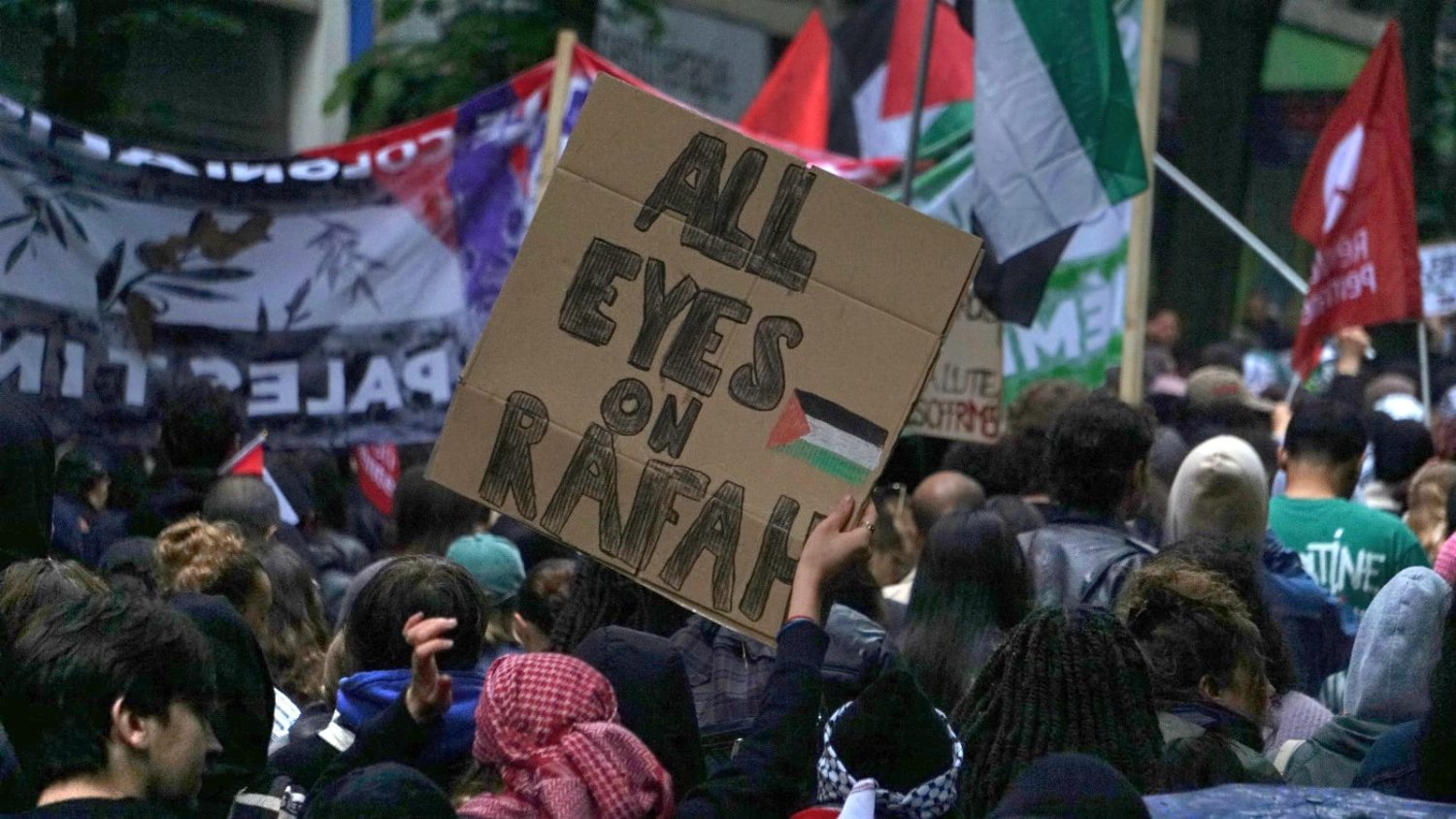
Near Trang Bang in South Vietnam, on June 8, 1972, 9-year-old Kim Phuc screams in pain after being burned with napalm. She was surrounded by her brothers and cousins, and followed by the South Vietnamese armed forces. The “scene” photographed by Nick Ut had a spectacular impact as soon as it was published on the front page of the New York Times on June 9, 1972, and then in the press around the world. A few months later, after an unprecedented rise in the anti-war movement, the Paris Accords, signed in January 1973, declared a ceasefire (Peace was not restored until April 30, 1975 with the fall of Saigon).
Sunday, May 26, 2024, in a refugee camp in Rafah, Gaza. A father carries the decapitated body of his son. Around them, bodies dismembered by bombs. The panic that grips the refugees as they run in all directions, while the night itself seems to burst into flames. The next day, the video of the massacre spreads across social networks and the world. In the nearly eight months since the genocide began in Gaza, these images are far from the exception. This time, however, the reaction took on a completely different dimension.
That same night, tens of thousands of protesters took to the streets of Paris. Until late at night, around the Place de la République, Châtelet and Rivoli, the Opera district and near the Elysée, spontaneous processions formed and got out of control. The next day, protesters took to the ring road. Again on Wednesday. And again on Thursday in front of the TF1 channel offices, where Israeli Prime Minister Benjamin Netanyahu was being interviewed. Demonstrations also took place in Lyon and Marseille during the week.
On Saturday, at the call of the AFA Paris Banlieue (Anti-Fascist Action), the streets of the French capital were filled (more than 30,000 protesters according to the organizers) in tribute to Clément Méric, against the extreme right and for Palestine. It was without a doubt the largest mobilization since October 7. Several thousand protesters also mobilized in numerous cities across the country. In Lyon, Toulouse, Montpellier and Perpignan there were more than 2,000. More than 1,000 in Rennes and more than 15,000 in Marseille. In many cases, the demonstrations were the largest since October, even in small towns such as Saint-Brieuc and Morlaix, where several hundred protesters attended.
In Saturday’s demonstrations, as in spontaneous marches, young people are on the front line. In Paris, the sectors that have been mobilizing for several months are joined by a large number of new protesters from the institutes and universities of the Île-de-France region, with a notable presence of young people from popular neighborhoods. These profiles are reminiscent of the sectors mobilized in spontaneous demonstrations at the time of the “Black Lives Matter” mobilizations in France in the summer of 2020.
A qualitative change in the mobilization, while in recent months, and since the progressive loss of momentum of the weekly marches that followed the beginning of the Israeli bombings on Gaza after October 7, solidarity with Palestine had been expressed almost exclusively on university campuses and on an avant-garde scale. The numerous reactions of influential personalities who until then had remained silent about the situation in Palestine give an idea of the change in mood, which is contributing to loosening the reactionary grip of recent months.
This will intensify pressure on Emmanuel Macron’s government, which last week chose to distance itself from the prospect of recognizing a Palestinian state and risks suffering a huge setback in the European elections, threatening to reopen a latent political crisis. In this context, after having made a first minimal “gesture” towards supporters of the Palestinian cause by announcing the exclusion of Israeli companies from the Eurosatory arms fair, which will be held from June 17 to 21 in the Paris region, the head of the State announced that he would speak on Thursday at the “20 heures” of France 2 and TF1 about “international current events.”
While the young people take to the streets, the union leaderships also seem to have changed their attitude somewhat: the leadership of the CGT (General Confederation of Workers) has decided to call for mobilization at the confederal level on June 8. This call should serve to prepare a leap in the mobilization of the leaders of the labor movement, who have a central role to play in reinforcing the relationship of forces in support of Palestine and against the complicity of the French government in the genocide carried out by Israel against the Palestinian population in Gaza.
One week before the European elections, whose result seems globally reactionary, the politicization of broad sectors of youth in solidarity with Palestine is an opportunity to begin to change the social dynamics in the country after a “black year” of offensives against rights social. At a time when the far right could triumph in the elections, the labor movement must try to link the mobilizations for Palestine to the construction of a global response to the government’s offensives against workers’ rights.
More than ever, the Palestine movement must go beyond challenging international institutions and develop its own perspectives and a clear program against the government and imperialism. To do this, it is necessary to advance in the structuring of mobilization from below. For now, in the space of a week, the mobilization in support of Palestine will have already helped to partially loosen the reactionary grip on the country. Maybe much more will be achieved?
Source: www.laizquierdadiario.com

